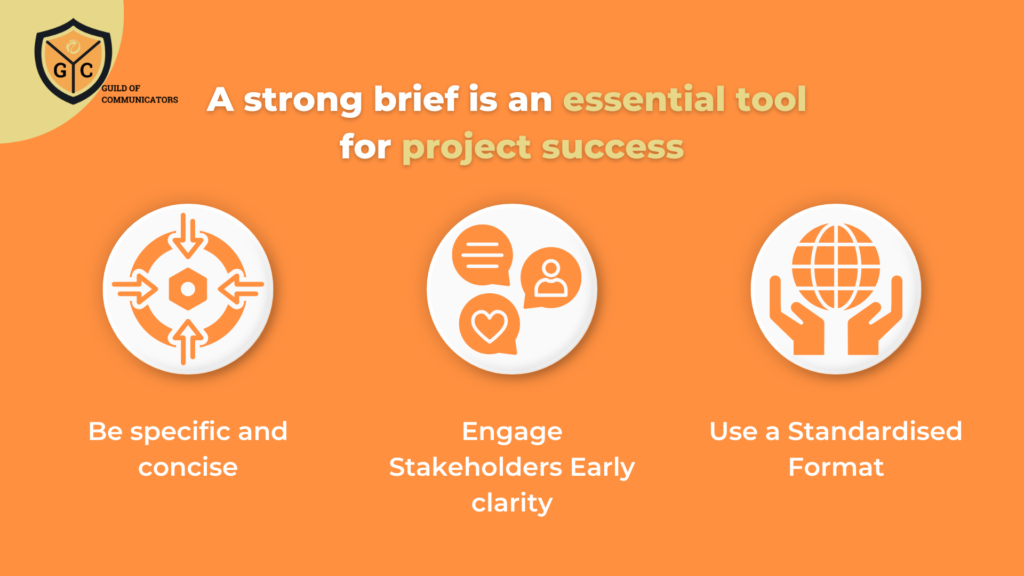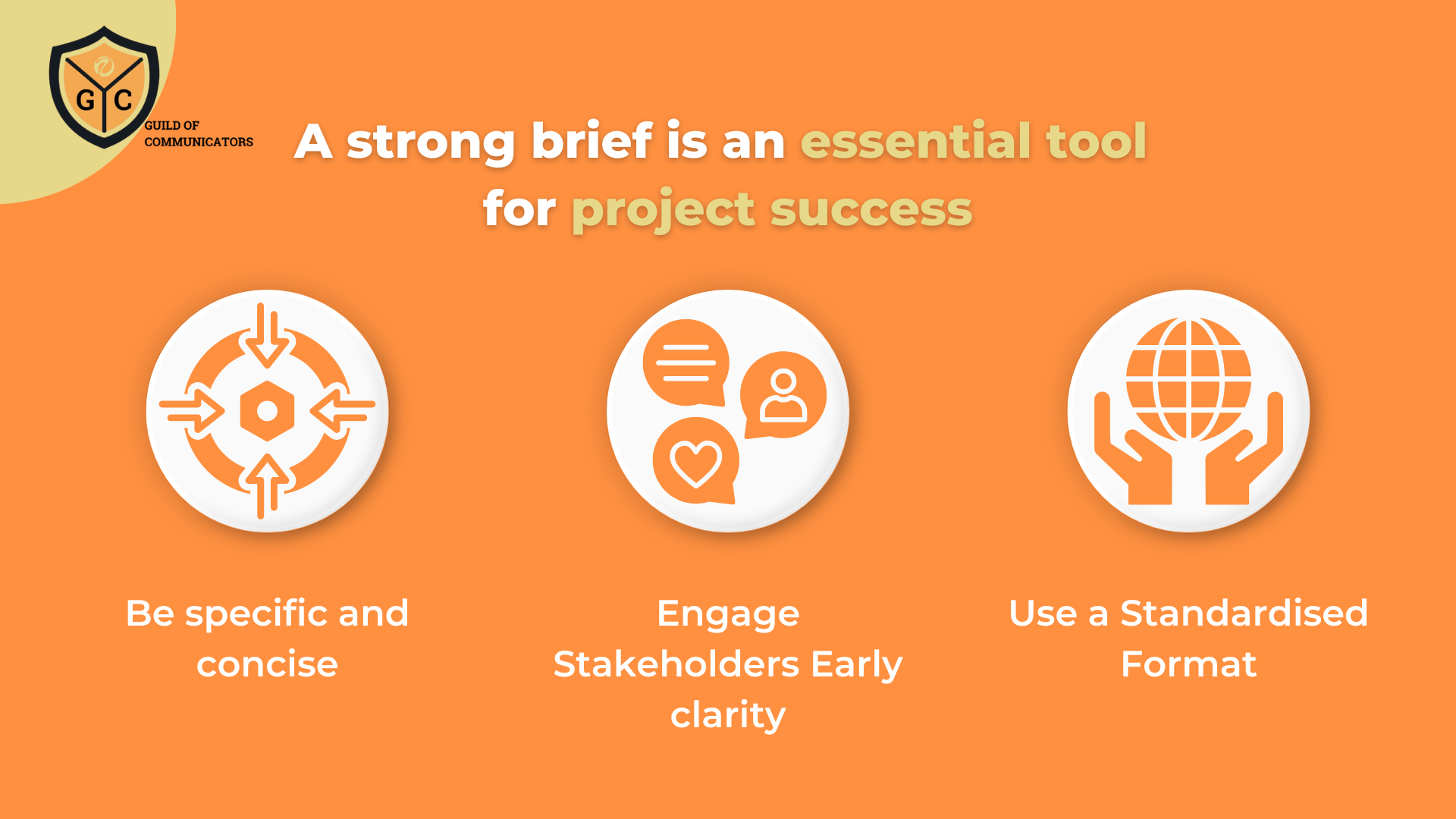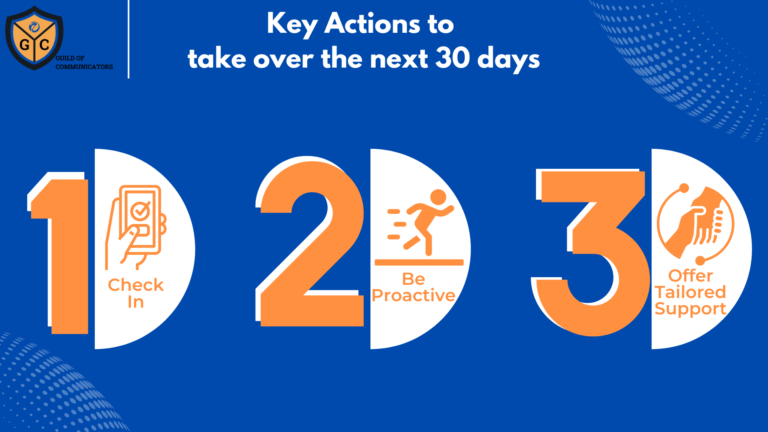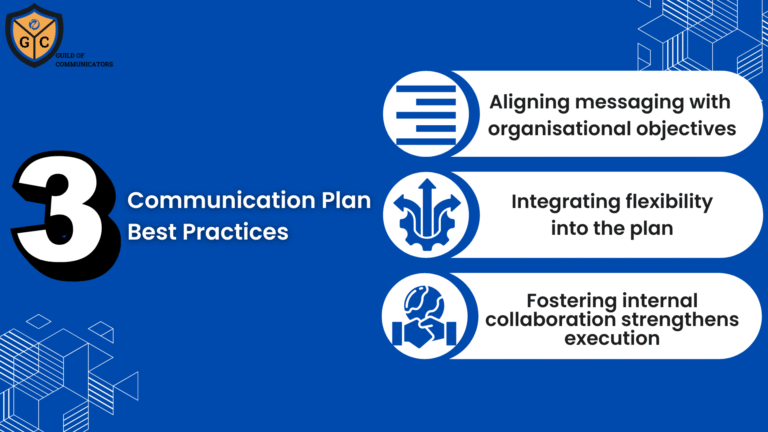Communicators are often excellent at shaping narratives and delivering messages.
However, when it comes to briefing their own teams on projects, campaigns, or programmes, clarity is often lacking.
A poorly structured brief can lead to misunderstandings, misalignment, and inefficiencies. Without a clear and actionable document, team members may struggle to execute effectively, stakeholders may misinterpret priorities, and overall project success can be compromised.
How a Poor Brief Undermines Project Success
When a brief is vague or missing key details, team members may struggle to understand the intended output and outcomes. This lack of clarity can result in confusion about objectives, priorities, and expectations. Without clear direction, team members may take different approaches, leading to inconsistencies in execution.
A weak brief can also impact motivation. When individuals do not see how their contributions fit into the bigger picture, they may disengage or deprioritise tasks. This lack of ownership can result in missed opportunities and delays in execution.
Additionally, without a strong briefing process, teams may skip critical planning stages, relying on assumptions rather than facts. This can lead to inefficiencies, increased revisions, and the need for extensive course correction further down the line.

Briefing as the Foundation of Project Success
Investing time in crafting a well-structured brief pays off throughout the project lifecycle. It reduces the risk of miscommunication, improves efficiency, and ensures that all parties involved are working towards a common goal.
Even with a well-planned project structure, clearly defined measurements, and periodic reviews, a weak brief can undermine execution. If team members and stakeholders are not properly briefed from the outset, they may struggle to align their efforts with the project’s strategic goals.
One major issue is the potential for misaligned expectations. If a project brief does not clarify the scope, key deliverables, and success metrics, different team members may work toward different interpretations of success. This can create delays, rework, and unnecessary back-and-forth discussions.
Another challenge arises when stakeholders are not fully engaged due to an ineffective briefing process. When key decision-makers and contributors do not have a shared understanding of the project, obtaining buy-in and approvals can become an ongoing struggle. A clear and comprehensive briefing process helps set expectations and establish a unified direction from the start.
The Essential Elements of a Clear Brief
A strong brief should include:
- Project Objectives – Clearly define what the project aims to achieve and how success will be measured.
- Key Messages – Outline the core messages that should remain consistent throughout the project.
- Target Audiences – Identify who the project is intended to reach and any audience-specific considerations.
- Scope of Work – Detail the deliverables, timelines, and any constraints or limitations.
- Roles and Responsibilities – Clarify who is responsible for each aspect of the project to ensure accountability.
- Approval Processes – Define how decisions will be made and who has final approval authority.
- Resources and Budget – Specify available resources and any budgetary constraints that need to be considered.
By ensuring these components are included, teams can approach the project with greater confidence and alignment.
Bringing Everyone on the Same Page
A well-prepared brief does more than just provide instructions; it offers clarity and perspective to all involved. When team members and stakeholders understand the purpose and structure of a project, they are better equipped to contribute effectively.
One key benefit is improved decision-making. With clear objectives and expectations outlined in the brief, teams can make informed choices that align with strategic goals. This reduces the likelihood of missteps and ensures that resources are allocated efficiently.
A strong brief also fosters better collaboration. When all parties have a shared understanding of the project’s scope and objectives, communication flows more smoothly. This minimises confusion, streamlines processes, and strengthens teamwork.
Furthermore, a detailed brief provides a foundation for continuous alignment. As the project progresses, teams can refer to the brief to ensure they remain on track. This helps prevent scope creep, maintains focus on core objectives, and ensures that the project stays aligned with business priorities.

Making Briefs More Actionable
A strong brief is an essential tool for project success. By improving clarity, setting clear expectations, and fostering collaboration, communicators can ensure that their teams and stakeholders are well-prepared to execute with confidence.
To enhance the effectiveness of a project brief, consider the following best practices:
- Be Specific and Concise – Avoid vague descriptions and provide clear, actionable details that leave no room for misinterpretation. Define what needs to be achieved, by whom, and within what timeframe.
- Engage Stakeholders Early – Involve key team members and decision-makers in the briefing process. Encourage discussion and feedback to ensure alignment from the outset.
- Use a Standardised Format – Implement a consistent briefing template to ensure that all necessary information is included in every project brief. This helps streamline processes and maintains clarity across different initiatives.
Taking the time to refine the briefing process will lead to smoother execution, better alignment, and ultimately, stronger results for communication projects.
*****
Join the Guild of Communicators at www.gocommunicators.com.
The Guild of Communicators (Go Communicators) stands as the preferred community for communicators seeking to elevate their craft. Through our Academy of Excellence, we provide best-in-class frameworks, fit-for-purpose resources, and opportunities that support members in achieving professional excellence.
We provide the following resources, tools and opportunities to members:
- Best-in-Class Resources: We provide our members with access to frameworks, playbooks and tools that empower them to achieve and maintain professional excellence.
- Continuous Learning and Growth: Through our comprehensive training programmes, workshops, delivered digitally, 24/7 and in-person, we support the ongoing professional development of communicators.
- A Supportive Network: GOC fosters a vibrant community where communicators can connect, collaborate, and support each other, creating a network that champions mutual growth and success.
- Shared Knowledge and Expertise: Our members benefit from the collective wisdom and experience of a diverse group of communication professionals, enhancing their skills and perspectives.
Go Communicators is dedicated to amplifying the impact and value that communicators bring to their organisations, highlighting their crucial role in driving success and growth.
We equip our members with the strategies and tools needed to become influential leaders and business partners within their organisations, enhancing their ability to drive positive change and outcomes.
Through our support and resources, communicators can demonstrate clear, measurable outcomes that showcase their value and impact, reinforcing their importance to their organisations.
Join the Guild of Communicators at www.gocommunicators.com
Subscribe to join over 1500+ communicators and brands getting value every Tuesday while reading A Communicator’s Perspective, our weekly newsletter.




